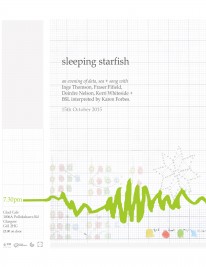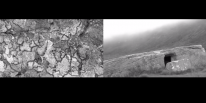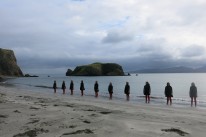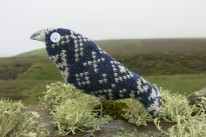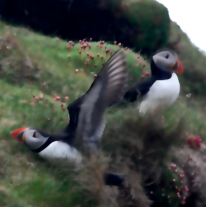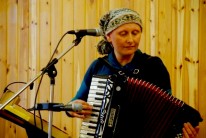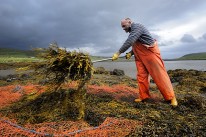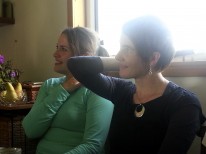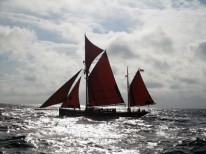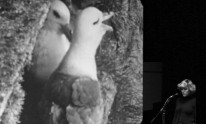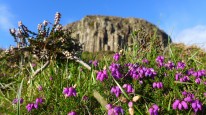‘An eye to the Windward’: Sea Change on Fair Isle
Ruth Little

Anne Sinclair points at a narrow yellow pine door leaning against a wall in the Fair Isle Museum: ‘When I was growing up, nearly all the internal doors in people’s houses were from shipwrecks.’ Fair Isle may be largely treeless, but there’s wood to be had. Over some 5000 years of settlement here, the sea has thrown up timber for lining walls, building furniture and making children’s toys; it has also provided sacks of flour, lead, crockery and chinaware. And fish, of course – plenty of fish.
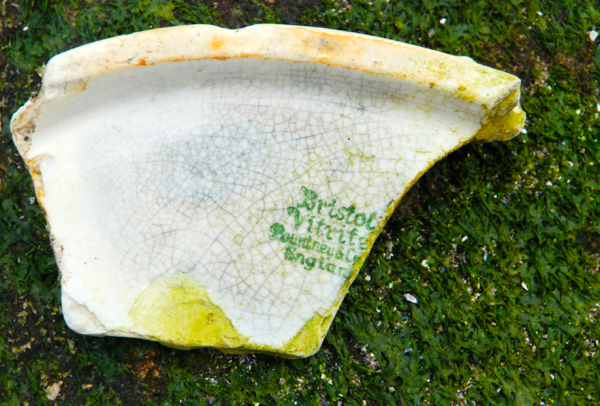
Flotsam, jetsam
Fishing has been a significant part of the small island’s economy throughout its long history. When a group of artists and scientists sailed here with Cape Farewell on the Swan in 2013, we carried a small cargo of copies of White Below: Poems and Stories from Shetland’s Fishing Industry (Hansel Press, Orkney), which contains beautiful dialect poems by Fair Islander Lise Sinclair about the local fishing tradition, passed down by her grandmothers. Storytelling, fishing, spinning, knitting, crofting and singing are all intimately connected to one another and are inseparably part of the island’s living tradition – and all of it, all of this work of the hands, mediated by new technologies and interwoven with the wider conversations that the outward-looking islanders are part of – all of it comes from and returns to the sea.
Now Lise is gone, far, far too soon, following an illness last year, and we are back with filmmakers Andy Crabb and Peter Cutts, photographer Jen Wilcox and textile artist Deirdre Nelson, to mark her profound and palpable influence on this island, its culture and its aspirations, in the premiere performance of Da Fishing Hands at the Fair Isle Community Hall. Da Fishing Hands, with lyrics by Lise and music by Inge Thomson, is a collection of songs inspired by the traditional method of recording the position of abundant fishing grounds. This involved extending a line through two sets of two landmarks (‘meids’ in Shetland) and taking the boat to their precise meeting point. ‘Da Skeo o’Buness an da Skeo o’Brecks o’Leogh’; ‘Da Burrian an da Apron o’Heelie Stack’; ‘Da Muckle Keel in da Slack o’Uren an da Rock’: the phrases are rigorous tracking devices, but they’re also incantations, unintended poems to a people and their place. The performance of Da Fishing Hands, on a still and foggy night, was a mesmerizing and moving love song to the sea, and an ardent statement of the interdependence of the island’s human culture and its marine ecology.
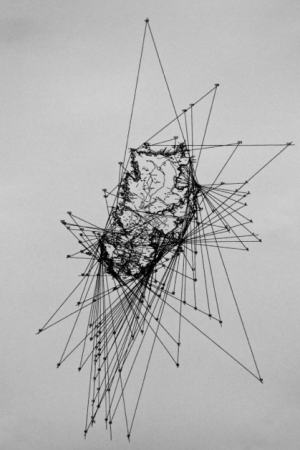
Da Fishing Hands of Fair Isle
Every member of Fair Isle’s community – including the children – has signed up to support an application led by ecologist Nick Riddiford through the Fair Isle Marine Environment Initiative (FIMETI) for Fair Isle’s local waters to be designated a (Demonstration and Research) Marine Protected Area by the Scottish Government. The scale and strength of community support, of which Da Fishing Hands was a striking example, is understandable. There are so many good reasons for the designation that Nick hardly knows where to begin. ‘We just cannot afford to lose this resource…This is a very good place for looking at change. It could be a model for Scotland, which needs a test site for trialing sustainable methods.’ Fair Isle holds exceptionally long runs of data on weather, sea conditions, seabird ecology, cetaceans, plankton and archeology – the community includes individuals, such as Nick and meteorologist Dave Wheeler, with expert knowledge of these fields. The world-renowned Fair Isle Bird Observatory (Britain’s most northerly) was established on the island in 1948; thousands of birders come here in spring and autumn every year to contribute to the monitoring of native, ‘blow-in’ and migratory species which underpins wider research into the impacts of climate and environmental change on the island’s biodiversity.
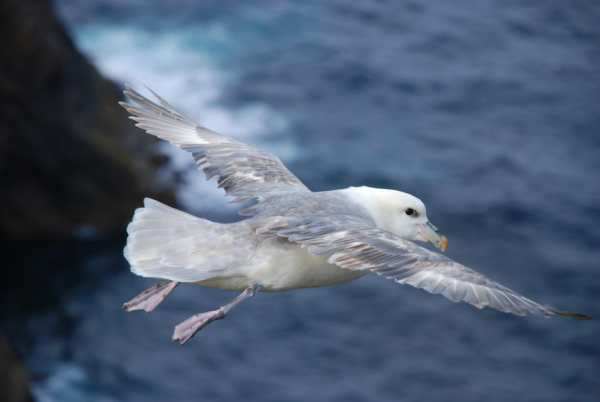
Fulmar
And there’s an onus on Government too, not just on the people of Fair Isle, to support good stewardship of the island’s resources. Fair Isle is a Site of Special Scientific Interest (SSSI) and should therefore (under EU Habitats and Birds Directives) be protected by Government from the deterioration of natural and species habitats. The island was awarded a rare Council of Europe Diploma in 1985 (one of only 2 in Scotland) for exemplary management of its outstanding natural and cultural values. Future renewal of the Diploma is subject to the creation of a protected marine area by the UK and Scottish Governments.
Everything here is connected: phytoplankton supports zooplankton which feeds sandeels which sustain seabirds and the fishery; the seabirds, sea fishing and local biodiversity are woven into local culture, which, along with them, sustains environmentally-engaged tourism, and this in turn supports local culture and local stewardship of precious resources. Close-knit, is how you might describe the interrelation of human culture and marine ecology on this island of knitters. The greatest risk here is the risk of this beautiful fabric unraveling.

Fair Isle knitter and designer Mati Ventrillon
And change there is – some of it incremental and barely noticeable, some of it, like the decline of kittiwake, shag and arctic tern breeding populations of late, catastrophic. Some of it is taking place underwater, with change marked by absences where there was once abundance – of sand eel, ling, cod and halibut, and of lobster which once filled the creels of local fishermen but have been overfished by commercial boats from outwith Shetland’s islands. ‘White below’ once described a hold full of valuable fish. White above was the seabird guano staining cliffs and stacs around the coast. Now local fishermen come back almost empty-handed, and more and more of the stacs are dark and quiet.

Toothed wrack, shipwrack
The wind and waves have wracked and wrecked boats and people here for hundreds of years; and they’ve thrown unexpected gifts on Fair Isle’s shores. A nineteenth-century newspaper described Fair Isle immigrants to Nova Scotia as having ‘an eye to the windward’. Change isn’t always for the worse: Fair Islanders have always looked for opportunity while blessing what they have. Multi-skilled, multi-tasking, with long horizons and deep and broad roots in land and water, they are the best, the true custodians of this environment, and they deserve our support and respect for their tireless efforts to maintain its health for the common good.

Ruth Little
Fair Isle Marine Environment & Tourism Initiative (FIMETI) website and on Facebook
Twelve reasons for a Demonstration and Research MPA in Fair Isle waters
Marine Protected Areas in Scotland’s Seas
Inge Thomson @IngeThomson
Fair Isle Bird Observatory @FI_Obs

